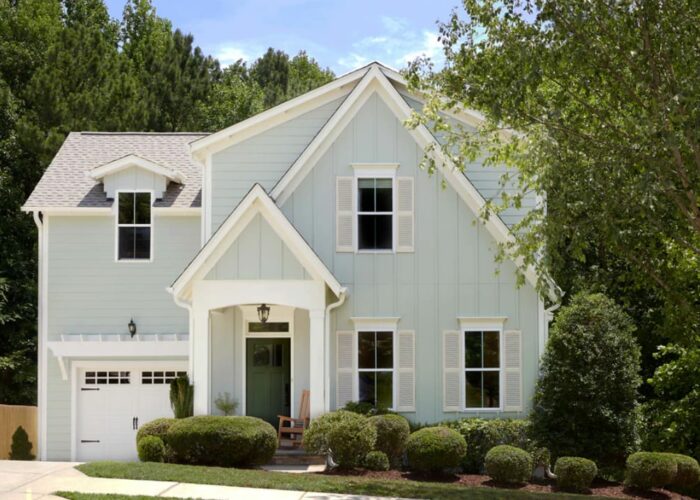Eco-Friendly House Paint Options: A Guide to Sustainable Painting Choices

Exploring eco friendly house paint options opens up a world of possibilities for environmentally-conscious homeowners. From vibrant colors to durable finishes, these paints offer a sustainable alternative without compromising on quality. Let's delve into the realm of eco-friendly painting choices and discover the benefits they bring to our homes and the planet.
In this guide, we will cover different types of eco-friendly house paints, their ingredients, application techniques, color options, and much more. Get ready to transform your living spaces with a touch of green!
Eco-Friendly Paint Options

When it comes to choosing house paint, there are several eco-friendly options available in the market that offer a sustainable and environmentally conscious choice for homeowners.
Using eco-friendly paints not only benefits the environment by reducing harmful emissions and toxins but also promotes better indoor air quality for you and your family. These paints are made using natural ingredients and low-VOC (volatile organic compounds) formulas, making them a healthier choice for your home.
Types of Eco-Friendly Paints
- Water-Based Paints: These paints are made with water as a base instead of harsh chemicals, making them low in VOCs and easy to clean up with water.
- Milk Paints: Made from milk protein, lime and earth pigments, milk paints are biodegradable, non-toxic, and have a unique matte finish.
- Clay Paints: Clay paints are made from natural clay, minerals, and pigments, providing a breathable and mold-resistant finish for interior walls.
- Plant-Based Paints: These paints are derived from plant oils and resins, offering a natural alternative to traditional oil-based paints.
Benefits of Eco-Friendly Paints
- Reduced Harmful Emissions: Eco-friendly paints emit fewer toxins into the air, contributing to better indoor air quality and a healthier living environment.
- Environmentally Sustainable: By using natural ingredients and renewable resources, eco-friendly paints help reduce the carbon footprint associated with traditional paint production.
- Healthier Living Spaces: The absence of harmful chemicals in eco-friendly paints makes them a safer option for homes, especially for those with allergies or sensitivities.
Cost Comparison
While eco-friendly paints may have a slightly higher upfront cost compared to traditional paints, the long-term benefits they offer in terms of health and sustainability make them a worthwhile investment for homeowners.
Durability and Quality
Eco-friendly paints are known for their durability and quality, providing a long-lasting finish that resists fading, cracking, and peeling. Despite being eco-friendly, these paints offer excellent coverage and color retention, ensuring a beautiful and sustainable paint job for your home.
Ingredients and Composition

When it comes to eco-friendly paints, the key ingredients play a crucial role in determining the environmental impact of the product. These ingredients are carefully selected to minimize harmful effects on the environment and human health.
Key Ingredients in Eco-Friendly Paints
- Natural pigments: Eco-friendly paints often use natural pigments derived from sources like clay, minerals, and plant extracts. These pigments are non-toxic and biodegradable, reducing the overall environmental footprint of the paint.
- Plant-based binders: Instead of traditional petroleum-based binders, eco-friendly paints utilize plant-based binders such as linseed oil, soybean oil, or citrus extracts. These natural binders are renewable and emit fewer volatile organic compounds (VOCs) during application.
- Clay or chalk fillers: Eco-friendly paints may contain fillers like clay or chalk, which help improve coverage and durability without introducing harmful chemicals into the environment. These fillers are naturally occurring and have minimal impact on indoor air quality.
Certifications and Labels
- Look for certifications like Green Seal, LEED, or EcoLogo when choosing eco-friendly paints. These certifications indicate that the product meets specific environmental standards and has been independently verified for its eco-friendly attributes.
- Labels such as "low-VOC" or "zero-VOC" are also important indicators of an eco-friendly paint. VOCs are harmful chemicals that can off-gas into the air, contributing to indoor air pollution and environmental degradation. Opting for paints with low or zero VOC content helps reduce these negative impacts.
Application and Coverage

When it comes to applying eco-friendly paints for your home, there are a few tips to keep in mind to achieve the best results. Eco-friendly paints can be applied in a similar manner to traditional paints, but it is essential to ensure that the surface is clean, dry, and free of any existing paint or debris.
It is also recommended to use high-quality brushes and rollers to ensure a smooth and even application.
Proper Application Techniques
- Start by preparing the surface by cleaning and sanding if necessary.
- Apply the eco-friendly paint in thin, even coats to prevent drips and ensure proper coverage.
- Allow each coat to dry completely before applying the next one.
- Use a brush for corners and edges, and a roller for larger surfaces for a uniform finish.
Coverage Comparison
When comparing the coverage of eco-friendly paints with traditional paints, eco-friendly options generally have similar coverage capabilities. However, it is important to note that coverage may vary depending on the brand and specific product. Some eco-friendly paints may require an additional coat for full coverage, while others may have superior coverage in fewer coats.
Special Considerations
When using eco-friendly paint options, it is important to follow the manufacturer's instructions carefully. Some eco-friendly paints may have different drying times or application techniques compared to traditional paints. Additionally, certain types of eco-friendly paints may require specific primers or sealers to ensure proper adhesion and durability.Overall, by following proper application techniques and considering any special instructions, eco-friendly paints can provide excellent coverage and a beautiful finish for your home while being environmentally conscious.
Color Options and Finishes
When it comes to eco-friendly paints, you may be surprised by the wide range of color options available. From soft neutrals to bold hues, there is a color to suit every taste and style. Additionally, eco-friendly paint lines offer different finishes such as matte, glossy, satin, and more, allowing you to achieve the desired look for your space.
Choosing the Right Color and Finish
- Consider the natural light in the room: Dark colors absorb light, making a room feel cozy, while light colors reflect light, making a room appear more spacious.
- Think about the mood you want to create: Warm tones like reds and oranges can add energy, while cool tones like blues and greens can create a calming atmosphere.
- Take into account the function of the room: Matte finishes are great for hiding imperfections in walls, while glossy finishes are easy to clean and work well in high-traffic areas.
- Experiment with sample pots: Before committing to a color and finish, test out a few options on your walls to see how they look in different lighting conditions.
Final Thoughts
As we conclude our exploration of eco-friendly house paint options, it's evident that making sustainable choices in painting not only enhances the beauty of our homes but also contributes to a greener future. By opting for eco-friendly paints, we can create healthier living environments while reducing our carbon footprint.
Embrace the power of eco-conscious painting and make a positive impact one brushstroke at a time.
Question Bank
What are some key benefits of using eco-friendly paints?
Eco-friendly paints reduce harmful emissions, promote better indoor air quality, and contribute to a healthier environment overall.
How do I know if a paint is truly eco-friendly?
Look for certifications like Green Seal or LEED certification, which ensure that the paint meets specific environmental standards.
Are eco-friendly paints more expensive than traditional paints?
While eco-friendly paints may have a slightly higher upfront cost, their long-term benefits outweigh the initial investment in terms of health and environmental impact.

